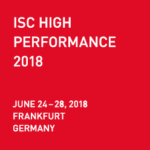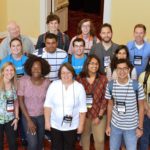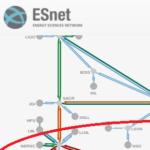Researchers at the University of Texas at Arlington are using TACC supercomputers to study the unique traits of snake evolution. Led by assistant professor of biology Todd Castoe, the team is exploring the genomes of snakes and lizards to answer critical questions about these creatures’ evolutionary history. For instance, how did they develop venom? How do they regenerate their organs? And how do evolutionarily-derived variations in genes lead to variations in how organisms look and function? “Some of the most basic questions drive our research. Yet trying to understand the genetic explanations of such questions is surprisingly difficult considering most vertebrate genomes, including our own, are made up of literally billions of DNA bases that can determine how an organism looks and functions,” says Castoe. “Understanding these links between differences in DNA and differences in form and function is central to understanding biology and disease, and investigating these critical links requires massive computing power.”
Archives for June 2017
Intel Omni-Path Architecture: Incredible Momentum for a New Technology
This is the last of four articles on Intel Omni-Path Architecture (Intel OPA) next-generation fabric for high-performance computing (HPC) solutions. Intel OPA is in clusters used for traditional supercomputing, artificial intelligence (AI), HPC cloud, and in the enterprise.
Video: Scaling Climate and Weather Forecasting on Sunway TaihuLight
Haohuan Fu from Tsinghua University in China at the PASC17 conference in Lugano. “This talk reports efforts on refactoring and optimizing the climate and weather forecasting programs – CAM and WRF – on Sunway TaihuLight. To map the large code base to the millions of cores on the Sunway system, OpenACC-based refactoring was taken as the major approach, with source-to-source translator tools applied to exploit the most suitable parallelism for the CPE cluster and to fit the intermediate variable into the limited on-chip fast buffer.”
HPC Capacity Doubles on Irish Supercomputer List
The 8th Irish Supercomputer List was released last week, featuring two new Top500-class machines. The new entrants, from an undisclosed software company, feature at spots 196 and 197 on the 49th Top500 Supercomputer List, each with a Linpack Rmax of 819.16 TFlop/s. This more than doubles the Irish HPC capacity, up from 1.46 PFlop/s to 3.01 Pflop/s.
Video: The Amazing Lustre through the Alps Tour
We interrupt our stream of serious HPC news for this post-ISC update from Europe. “After ISC wrapped up last week, I had the good fortune to join the First Annual Lustre Motorcycle Tour of the Alps. This amazing three day trip took us through Italy, Switzerland, and Austria.”
Proceedings from ISC 2017 are now available for download
The Proceedings from ISC 2017 are now available for download at no cost for a limited time. “We are pleased to announce that many fascinating topics in HPC are covered by the proceedings.”
PEARC17 Seeds Next Generation of HPC Professionals
Today PEARC17 announced that 66 students will attend their conference coming up July 9-13 in New Orleans. PEARC17—Practice & Experience in Advanced Research Computing 2017—is for those engaged with the challenges of using and operating advanced research computing on campuses or for the academic and open science communities. This year’s inaugural conference offers a robust technical program, as well as networking, professional growth and multiple student participation opportunities.
How Zettar Transferred 1 Petabyte of Data in Just 34 Hours Using AIC Servers
In the world of HPC, moving data is a sin. That may be changing. “Just a few weeks ago, AIC announced the successful completion of a landmark, 1-petabyte transfer of data in 34 hours, during a recent test by Zettar that relied on the company’s SB122A-PH, 1U 10-bay NVMe storage server. The milestone was reached using a unique 5000-mile 100Gbps loop which is a SDN layer over a shared, production 100G network operated by the US DOE’s ESNet.”
AFRL Taps IBM to Build Brain-Inspired AI Supercomputer
Today IBM announced they are collaborating with the U.S. Air Force Research Laboratory (AFRL) on a first-of-a-kind brain-inspired supercomputing system powered by a 64-chip array of the IBM TrueNorth Neurosynaptic System. The scalable platform IBM is building for AFRL will feature an end-to-end software ecosystem designed to enable deep neural-network learning and information discovery.
Job of the Week: Computational Scientist at the University of Oregon
The University of Oregon High Performance Computing Research Core Facility (HPCRCF) is seeking a Computational Scientist in our Job of the Week. The HPCRCF is a new facility located on the campus of the UO in Eugene, Oregon. The mission of the HPCRCF is to support computational research at the UO and collaborating institutions, and is home to a new flagship research cluster.












